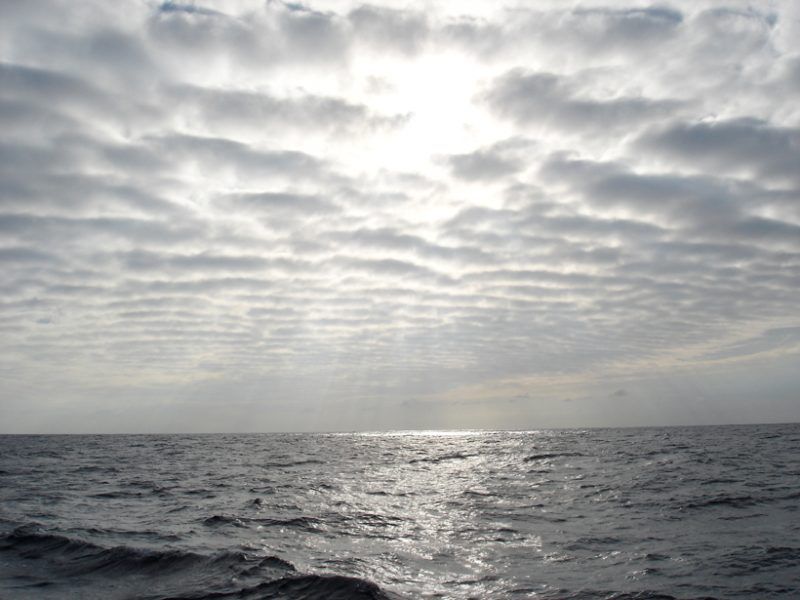Metals within the millimeter-thick sea surface microlayer may impact ocean health and climate.

What lies between the sea and the sky? The horizon, most people would probably say. But ocean scientists know there’s something else: a millimeter-thick layer of carbohydrates, proteins, and lipids called the sea surface microlayer (SML). This gel-like layer acts like the ocean’s skin, regulating the exchange of substances between water and atmosphere. It plays a key role in how oceans absorb carbon dioxide and whether trash and other pollutants sink or float. Now a new study reveals why certain trace metals become concentrated in the SML, a finding that could help scientists understand how changes in the ocean’s “skin” affect climate and ocean health.
The SML is a complex environment, full of dissolved and particulate organic matter from marine life and human activities. Past studies have shown that when this layer contains high levels of lipids—organic compounds made of fatty acids and their derivatives—the concentration of certain trace metals is also higher. This finding is important because both metals and lipids can alter the ocean’s surface tension, which, in turn, affects the production of sea spray aerosol. These tiny droplets of seawater, produced when wind buffets the ocean and waves break, can travel high into the atmosphere. They play a key role in the formation of clouds, as well as other vital atmospheric processes.
To determine which lipids have the highest affinity, or tendency to bind, to metal ions in the SML, Zhang et al. put several types of fatty molecules in water with different metals and observed which combinations caused the water’s surface tension to decrease, an indication that binding was occurring. The team also used a technique called Brewster angle microscopy to directly observe ultrathin organic films similar to the SML and study their molecular organization.
Phosphate esters—a type of lipid found in lubricating hydraulic fluids and flame retardants, as well as in natural systems—were the most effective at binding to trace metals, the team found. In particular, they tended to bind to positively charged ions of aluminum, iron, and zinc very strongly. Although other types of organic molecules also bind to trace metals, such as those containing sulfate and nitrate groups, the study shows that phosphate esters are an important player in the SML’s surface organization, a dynamic that could affect the exchange of gases, aerosol composition and reflectivity, and water vapor worldwide. Additionally, this research explains metal enrichment within the SML, a critical finding for understanding metal abundances at ocean surfaces and the cycling of trace metals in our environment. (Journal of Geophysical Research: Oceans, https://doi.org/10.1029/2018JC013926, 2018)
Citation: Underwood, E. (2018), Why trace metals cling to the ocean’s skin, Eos, 99, https://doi.org/10.1029/2018EO102187. Published on 14 August 2018.










